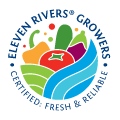Learn more about the Axis II Agricultural Production System and section 2.9 Use of Phytosanitary Products

2.9.1. Authorized products
Document a policy of the acquisition of products, based on compliance with applicable laws in the countries of origin and destination. Phytosanitary products must be purchased from suppliers approved by the relevant authorities.
2.9.2. Technical and safety sheets
Support documentaries, safety data sheets and guarantee letters from the phytosanitary product supplier.
Verify the specifications of the product label and when the content is of doubtful origin, rely on analysis of a laboratory accredited with ISO / IEC-17025.
2.9.3. Preventive plan and control measures
Document and implement a preventive plan for the use of phytosanitary products. The plan should include what products should be used in accordance with the instructions on the labels, measures for good use and management of agrochemicals (consider doses, personal protective equipment, disposal of containers, storage, the specified requirements for the chemical or component, acquisition, preparation of mixtures, transfer, application, training, medical examinations, validations, policies, programs and records).
Likewise, it must maintain records of the use of phytosanitary products, including: cultivation, place, date and time of application, meteorological conditions, applied dose, amount of water used, equipment used, commercial name and active ingredient of the product, reentry period and harvest interval and signature of the responsible; document that personnel who are in contact with these substances are trained or supervised by authorized technicians, in compliance with current regulations.
2.9.4. Personal protective equipment
Verify that the occupationally exposed personnel are fully and correctly using the appropriate personal protective equipment and in optimal conditions according to the activity they are performing.
2.9.5. Maximum residue limits and safety interval
Document the updated regulations that support the maximum limits allowed by the authorities of the country of origin and destination for the phytosanitary products used.
The company must comply with the application intervals marked on the product label, prior to harvest, to avoid breaches in the permitted limits. To verify that the product does not exceed the maximum permissible limits, it is necessary to apply an analysis by a laboratory accredited with ISO / IEC-17025.
Evidence that the periods of reentry of the workers to the production units to which they have been applied products that indicate this in their safety information are respected.
2.9.6. Handling empty containers
Document and implement a procedure that establishes the prohibition of reusing empty agrochemical containers for any purpose.
The obligatory basic steps for the handling of empty containers will be the following:
- Apply triple wash.
- Drill the containers to avoid re-packaging of product or any other use.
- Separate the lids of the containers.
- Place and identify the containers in plastic bags.
- Temporarily deposit the containers in the areas designated by the company.
- Send to authorized centers for their confinement, recycling or final destruction.
- Have records of the final safe destination of plastic waste.


